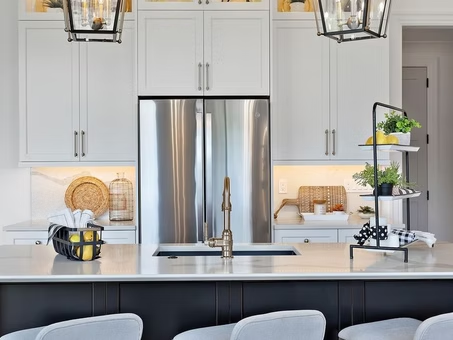How to Choose the Best Electricity Soup Warmer for Your Restaurant Needs
In the bustling world of the food service industry, maintaining the right temperature for soups can be a game-changer for restaurants aiming to deliver exceptional dining experiences. A recent report by IBISWorld revealed that the restaurant sector is projected to reach a market size of $899 billion by 2023, emphasizing the need for efficient kitchen equipment. One critical tool in achieving this goal is the Electricity Soup Warmer, which not only ensures soups are served at the optimal temperature but also enhances food safety and reduces waste. According to a study by Food Safety News, proper temperature control can minimize the risk of foodborne illnesses, a crucial aspect for any food establishment. Therefore, understanding how to choose the best Electricity Soup Warmer tailored to your restaurant needs can significantly impact both your operational efficiency and customer satisfaction.
Understanding Different Types of Electricity Soup Warmers Available on the Market
When selecting the best electricity soup warmer for your restaurant, it's crucial to understand the various types available on the market. Electric soup warmers come in a range of styles and functionalities, each designed to cater to specific culinary needs. For instance, some models focus on maintaining temperature, making them ideal for serving large quantities of soup consistently. Meanwhile, more advanced warmers may offer features such as programmable settings or temperature control, catering to chefs who require precision in their cooking process.
As the demand for efficient kitchen appliances grows, so does the variety of options. From basic soup warmers that get the job done to sophisticated models that incorporate blending capabilities, the choices can be overwhelming. It’s important to consider the size and capacity that aligns with your restaurant's needs. Furthermore, you might want to explore models with additional features that enhance usability and convenience, ensuring that your soup is not only warm but also ready to serve to delighted customers.
Key Features to Consider When Selecting an Electric Soup Warmer for Your Restaurant
When selecting an electric soup warmer for your restaurant, several key features can significantly enhance your operational efficiency and customer satisfaction. According to a report by Foodservice Equipment & Supplies, 72% of restaurants prioritize temperature control in their kitchen appliances. Thus, choosing a soup warmer with precise temperature settings is essential. Look for models that offer adjustable thermostats to maintain soups at the optimal serving temperature, typically between 160°F and 185°F. This ensures that your dishes not only retain flavor but also meet health safety standards.
Another crucial factor to consider is the capacity of the electric soup warmer. The National Restaurant Association suggests that a typical restaurant serves anywhere from 50 to 200 customers daily. This necessitates a unit that can hold a sufficient volume of soup without frequent replenishing. Opting for warmers with larger capacities or multiple compartments can streamline service during peak hours, reducing wait times and enhancing customer experience. Additionally, materials and durability are significant; warmers made of stainless steel not only resist corrosion but are also easier to clean, contributing to the overall efficiency of your kitchen operations.
How to Choose the Best Electricity Soup Warmer for Your Restaurant Needs - Key Features to Consider When Selecting an Electric Soup Warmer for Your Restaurant
| Feature | Description | Importance |
|---|---|---|
| Capacity | Size of the warmer, typically measured in liters. | High |
| Material | Stainless steel or other durable materials. | High |
| Temperature Control | Ability to adjust the temperature settings. | High |
| Portability | Ease of movement; includes wheels or handles. | Medium |
| Energy Efficiency | Power consumption and performance ratio. | High |
| Safety Features | Auto shut-off, thermal insulation, etc. | High |
| Ease of Cleaning | Design that allows easy access for cleaning. | Medium |
| Warranty | Length and coverage of the warranty. | Medium |
Comparing the Benefits of Countertop vs. Floor-Standing Soup Warmers
When selecting the right soup warmer for your restaurant, one essential consideration is whether to opt for a countertop or a floor-standing model. Both types offer unique benefits that can cater to different kitchen setups and service styles. Countertop soup warmers are compact and ideal for kitchens with limited space. They allow for easy access and quick serving, making them perfect for self-service stations or small-scale operations. In contrast, floor-standing models provide larger capacity and can maintain a higher volume of soup, making them suitable for bustling restaurants and catering services.
Tip: Assess your kitchen layout before making a decision. If you have ample space and anticipate high demand, a floor-standing soup warmer may be your best bet. Conversely, if you’re restricted on space or are running a small café, a countertop warmer can ensure efficient use of your limited area.
With the upcoming Commercial Kitchen Show in London, restaurant owners have a great opportunity to explore latest innovations in catering equipment. Engaging with suppliers at this event can provide insights into the best soup warmers that align with your needs and enhance your operational efficiency.
Tip: Take note of specific features that are crucial for your service, such as temperature control, ease of cleaning, and energy efficiency. This will aid you in making an informed choice that optimally serves your restaurant's requirements.
How Capacity and Size Impact Your Restaurant's Soup Serving Needs
When selecting an electricity soup warmer for your restaurant, understanding capacity and size is crucial to meet your soup serving needs effectively. A restaurant's soup demand can vary significantly throughout the day; therefore, choosing a warmer with the right capacity ensures you can prep large quantities during peak hours without compromising on quality or temperature. For example, if your establishment serves a variety of soups daily, opting for a larger model with adjustable shelves can provide the flexibility to store multiple types simultaneously, serving both hearty and lighter options as needed.
Moreover, the size of the soup warmer should align with your kitchen layout and storage capabilities. A compact soup warmer may be ideal for kitchens with limited space, but it’s essential to balance size with capacity. If you find your soups running out too quickly, it may be necessary to invest in a more substantial unit, even if it occupies more space. Ultimately, considering both the capacity to keep up with demand and the appropriate size for your kitchen ensures that your restaurant can serve delicious, hot soups efficiently and effectively, enhancing your overall dining experience.
Soup Warmer Capacity Comparison for Restaurants
This bar chart illustrates the average daily soup servings based on different capacities of soup warmers. As the capacity increases, the number of servings also increases, demonstrating the importance of selecting the right size for restaurant needs.
Tips for Maintaining and Cleaning Your Electric Soup Warmer to Ensure Longevity
Maintaining and cleaning your electric soup warmer is essential to ensure its longevity and optimal performance in your restaurant. One of the first steps in maintenance is to regularly check the unit for any signs of wear or damage. Inspect the power cord, heating elements, and any seals or gaskets. Addressing minor issues promptly can prevent larger repairs and extend the life of your equipment.
When it comes to cleaning, it’s important to follow manufacturer guidelines to avoid damaging components. Start by unplugging the warmer and allowing it to cool completely. Use a mild detergent mixed with warm water to clean the interior and exterior surfaces. Avoid abrasive cleaners that can scratch the finish. Regularly descaling the unit, particularly in areas with hard water, will help maintain efficient heating and prevent buildup. Lastly, ensuring that the warmer is stored properly when not in use will protect it from dust and potential damage, keeping it in prime condition for busy service days.


Fall into Function: How LaFata Cabinets Prepares Your Kitchen for the Cozy Season


Back-to-School Kitchen Refresh: How LaFata Cabinets Can Help You Stay Organized This Fall


